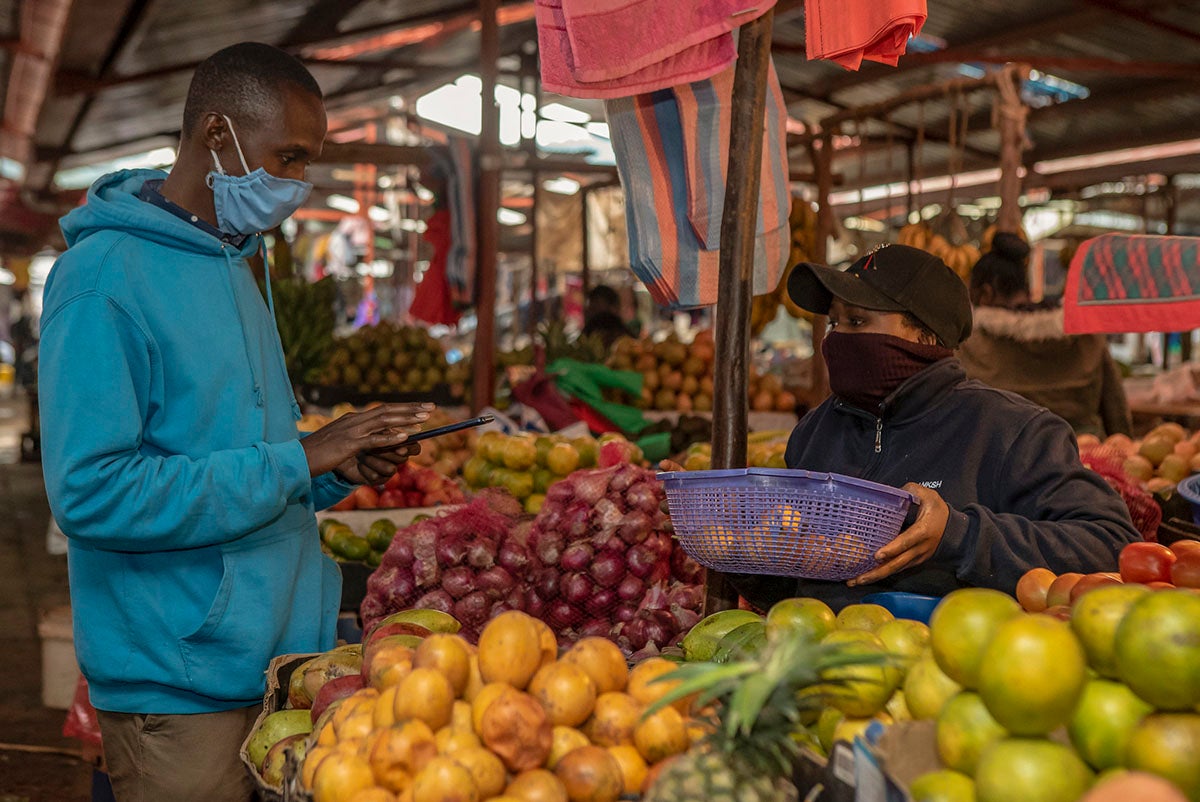 Hombre con mascarilla en mercado.
Hombre con mascarilla en mercado.
Picking up the newspaper in recent weeks would have been difficult if you were an education minister. Not only would you have been scrambling to organize learning during school closures, but the funds to do it seemed to be under threat. In many countries, media reports suggest the slashing of education budgets to make room for emergency spending on the coronavirus (COVID-19) response.
The effects of the pandemic on government education budgets, while important, are not the only funding worries for ministers. Education systems face a triple funding shock, with COVID-19 expected to put significant strains on household and donor funding that will only add to its effects on government funding.
In our recent note, we look at the funding outlook over the next two years and examine the options countries have to fund education while coping with the health and economic shocks of COVID-19.
The outlook is uncertain, but forecasts show that government spending on education is likely to suffer as a consequence of the pandemic. Using IMF projections of economic growth and government spending, we have looked at the potential impact on education budgets. We focus on projecting spending per school-aged child, which provides a more useful picture than total spending on how the changes might affect education access and quality. Our most optimistic scenario shows that the pandemic could reduce planned increases in education spending in 2020 versus projections prior to the crisis. But our more pessimistic forecasts show that per-capita education spending could fall significantly in all regions, with middle-income countries seeing the largest drops.
While economic growth is predicted to rebound in 2021, education spending is likely to stagnate in most countries, and actually fall in some, as governments attempt to contain budget deficits brought about by COVID-19.
The second shock to education financing will come from families’ own spending. Parents in low- and middle-income countries will struggle to maintain the considerable resources they devote to their children’s education. The livelihoods of many families have already been affected by the pandemic and are likely to be for some time to come. The ILO expects working hours to decline by 7 percent in 2020, equivalent to the loss of at least 195 million jobs worldwide. The pandemic is expected to push 40-60 million more children into extreme poverty. We know from past crises that income shocks are likely to lead to many children dropping out of school or not returning when schools reopen. In the Asian financial crisis of 1997-98, household education spending in Indonesia fell as much as 17 percent in rural areas, lowering school participation rates particularly for the poorest children.
The third shock is likely to come from external financing of education. Development assistance to the sector has only recently returned to levels seen before the 2008-09 financial crisis. Since COVID-19 is expected to hit the economies of the major bilateral donors hard, they will find it challenging to maintain their overall levels of assistance. This will have the largest impact in low-income countries, where development assistance makes up around 12 percent of total education funding.
While these forecasts remain fluid, the deteriorating outlook underscores that it is urgent to mount an effective pandemic response that protects education and does not worsen a global learning crisis that preceded COVID-19. Resources will be needed to ensure that systems are prepared and learning can continue during school closures, as well as to accelerate progress once schools can safely reopen.
How can countries achieve this? It will depend in part on the pandemic’s fiscal impact. For countries that have sufficient fiscal space, the pandemic response in education can be funded through additional spending. For those with limited fiscal space, funds will need to come from existing budgets and by making better use of the resources they have.
Donors should protect education assistance and frontload their existing commitments to help finance the COVID-19 response. While many countries will face hard choices, it is critical to give priority to frontline education services so that current levels of access and standards of quality are protected.
The crisis also highlights the need to improve the coverage and quality of data on education finance, to be better able to monitor spending plans and assess whether resources are being used effectively. As of today, we don’t have any data on education spending for 2019 and information for only 56 countries for 2018. In many countries, while information on education budgets exists, it’s not publicly available or presented in a meaningful way.
Protecting education financing should be part of an effective pandemic response, so that countries face only a temporary setback to their progress toward providing good quality education opportunities to all. Countries entered this crisis spending vastly different amounts on education. On average, high-income countries were spending 43 times as much on the education of their primary school children as low-income countries. And while developing countries have invested a lot more in their education systems over the past 15 years, it is not enough to narrow gaps in education quality and attainment.
The lockdown has made it clear that remote learning is part of the future, and that it will require massive improvements in connectivity, education technology, the digital skills of teachers and many other related investments. Ensuring that systems are better prepared to continue learning during school closures and can accelerate learning during the new normal will require even greater levels of investment. Since today’s children will pay for the debts incurred to respond to the COVID-19 crisis, it only seems fair and sensible that all countries find ways to protect learning and their financing of education.


Join the Conversation